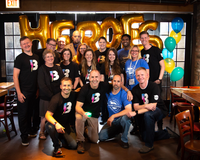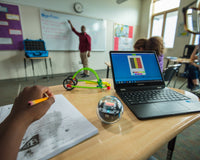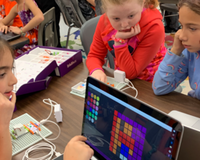Social-emotional learning (SEL) has been on the minds of parents and teachers for years, and for good reason. With social-emotional learning incorporated into everyday curriculum, kids and teens are better equipped to manage conflicting emotions or adapt to environmental changes as they grow into adulthood. However, with the state of education constantly evolving to meet the demands of different types of learners, how can educators continue to weave social-emotional learning into their daily activities and lesson plans?
SEL is critical for proper development inside and outside of the classroom. It helps students learn more about themselves, how to cope with difficult emotions, and how to respect and empathize with other people. Fortunately, integrating SEL doesn’t mean overhauling existing curricula: various educational activities can be added seamlessly into lessons to build social and emotional skills and create a more supportive learning environment.
What is Social-Emotional Learning?
Social-emotional learning is the educational process through which students discover how to field and manage their emotions, set and strive for realistic goals, understand empathy, maintain strong, healthy relationships, and become responsible decision-makers. SEL is commonly divided into five areas of core competencies. As we’ll see, for each core competency there are various activities that can be integrated into educational curricula to get students in tune with their social and emotional selves.
Self-awareness
Self-awareness consists of recognizing one’s emotions, thoughts, and influence on behavior. This also includes accurately assessing one’s strengths and weaknesses, as well as maintaining a solid foundation of optimism and confidence.
There are many ways to practice building self-awareness in the classroom. For example:
- Have each student identify how they are feeling on an emotion identification chart at the beginning of the day. This will not only help educators recognize how students feel day by day but also give kids the chance to check in with themselves.
- Integrate mindfulness exercises, such as deep breathing and short meditation. These simple activities can help students relax their minds, overcome overwhelming or negative feelings, and recognize the power of self-reflection.
- Invite students to respond to a journal prompt every day. Prompts like “What is something you are talented at?” can help students recognize their strengths and build confidence while also practicing their writing.

Self-management
Self-management is related to the regulation of one’s emotions, thoughts, and behaviors in varying situations — including managing stress, controlling impulses, maintaining motivation, and working towards personal and academic goals.
Self-management activities for the classroom can include:
- Create a “calm down corner” in the classroom, where kids can go when they are feeling overwhelmed with emotions. This area should be comfortable and can be filled with calming activities, like writing tools, books, and relaxing toys.
- Familiarize students with the idea of self-talk and teach them positive self-talk techniques like talking to yourself as you would talk to a friend.
- Ask students to write down a specific goal and then help them to think about what steps are needed to realize that goal. Set aside time for regular check-ins to see how they are progressing towards that goal.

Social awareness
Social awareness involves empathizing with others, including those from different cultures and backgrounds, understanding normal social and ethical behaviors, and recognizing support systems in the family, at school, and throughout the community.
Activities to build social awareness include:
- Read stories aloud in the classroom and invite students to take turns reading. After each read-aloud session, discuss what types of emotions were present in the story and how students felt about and related to the characters and their relationships.
-
Get students to walk in someone else’s shoes and experience other perspectives. For example, if your students are learning world history, you could use Google Expeditions to take them on virtual visit of the Smithsonian Museum of Natural History. Rather than simply reading about the natural world in a history book, your students will learn about the history of the world in a more dynamic way that may change their perspective.
Relationship skills
This SEL competency is key for maintaining strong and healthy relationships with diverse groups and individuals. This includes communicating clearly, active listening, cooperating, resisting negative social pressures, constructively negotiating conflict, and seeking or offering help when necessary.
Activities to develop relationship skills include:
- Having students work together towards a common goal is a great way to encourage relationship skills. For example, students can team up to build a bridge from classroom materials that the Sphero BOLT robot can drive across. This activity will have them solve challenges and listen to each other in order to succeed.
- Practice active listening by organizing improvisational role-playing activities that encourage students to listen to their peers before speaking or reacting.
- Create a cooperative learning environment in the classroom by integrating class discussions, presentations, and group work with assigned roles. This will help students not only learn from the educator, but also from each other.
Responsible decision-making
Students should learn how to make responsible and constructive decisions about individual behavior and social interactions while considering ethical standards, societal norms, and safety concerns. This also includes understanding the consequences of certain actions and the well-being of oneself and others.
Activities to encourage responsible decision-making include:
- A good way to teach students about responsibilities and decision-making is to work together to establish a set of classroom rules. This will make them think about how they behave in the classroom and towards others and how they want to be treated.
- Introduce a decision-making framework and get students to apply it to different scenarios. For example, using the ICED method, students will have to identify the problem in the scenario, create alternatives, evaluate the alternatives and decide on the best decision. They can then share their decisions and reasoning.
- It’s also a good idea to identify healthy coping mechanisms that students can use to deal with stress, like counting to 10 or focusing on something you are grateful for. These coping tools can help students get into a better frame of mind before they make decisions.
Take Learning to the Next Level With SEL
Social-emotional learning is a key component in a well-rounded education; without it, students can miss critical opportunities to learn fundamental life lessons that help them develop important interpersonal skills and grow into successful adults. Activities such as those mentioned in this article can help students hone their social and emotional skills and help to create a more cooperative, understanding, and ultimately safe environment in the classroom. This, in turn, will not only allow students to feel more comfortable with their peers and educators, but also benefit teachers by minimizing stress and establishing a more tolerant classroom atmosphere. For more, read about how tech, such as Sphero’s educational kits, can help foster social and emotional learning on our blog.
About the Author
The Sphero Team

The Sphero Team is comprised of current and former educators, education content and curriculum writers, product designers, engineers, executive leadership, and other experts in their fields. Learn more about who we are and what we do at sphero.com/about.










